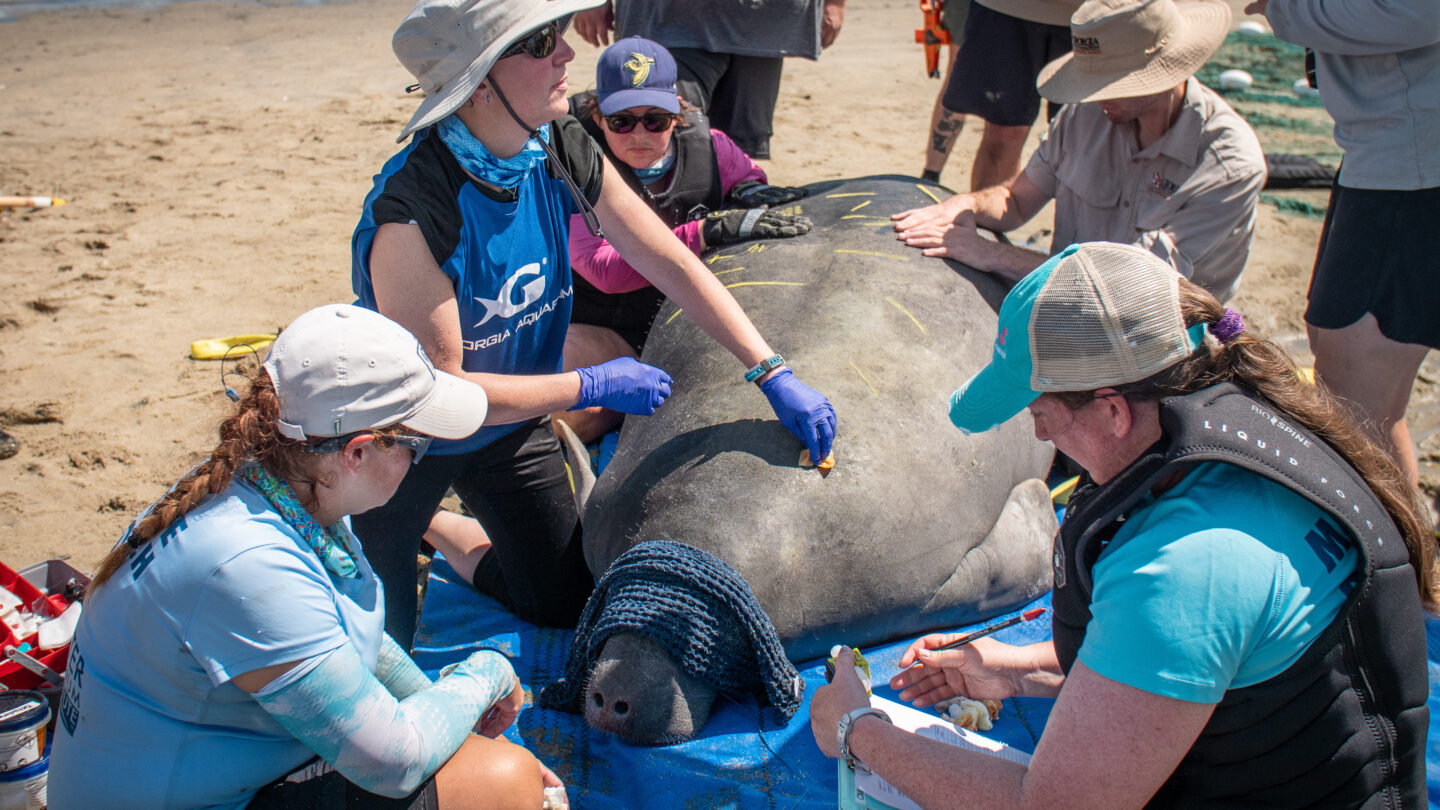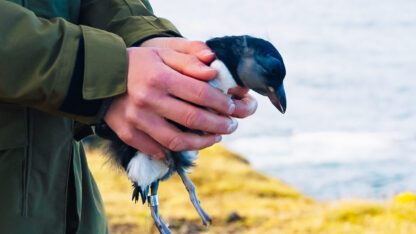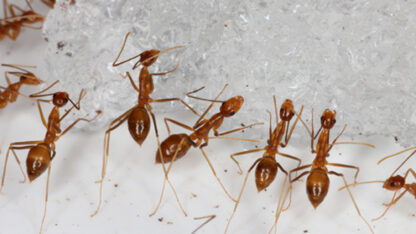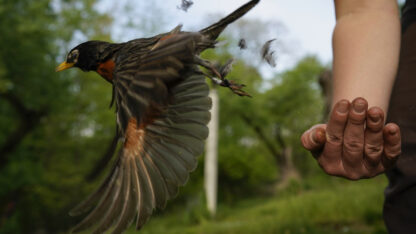Georgia researchers track Savannah River manatees

This coverage is made possible through a partnership with WABE and Grist, a nonprofit, independent media organization dedicated to telling stories of climate solutions and a just future.
Georgia scientists are tracking manatees in an effort to better understand and protect them.
When Georgia’s coastal water gets warmer in the spring and summer, manatees come up from Florida.
“There’s a tremendous amount of food resources for them,” said Clay George, senior wildlife biologist at the state Department of Natural Resources. “In Georgia and South Carolina, we have these immense tidal marshes that are full of Spartina grass or cordgrass.”
Those food sources are essential for manatees because of a die-off of the seagrasses they eat in Florida’s Indian River lagoon system.
Since 2015, scientists from Georgia’s Department of Natural Resources, the Georgia Aquarium and Florida’s Clearwater Marine Aquarium have been tagging manatees in Georgia with satellite trackers to follow their movements. That’s provided valuable information about the manatees’ behavior and migration, according to George.
However, places like the Savannah River, where the port and other industries generate a lot of ship traffic, can be risky for the manatees. One manatee a year dies from boat strikes there, on average.
But the researchers have done their tagging near the Florida border, and those manatees aren’t spending enough time in the Savannah River to give them a good picture of what manatees do there.
So this year, scientists attached trackers to two manatees, dubbed ODare and SammyG, in the Savannah River. The goal is to learn more about their movements and habits to better protect them.
George said the tracking elsewhere has shown that manatees often congregate where they can find fresh water.
“If there are sites like that in the Savannah River that we can identify, we might be able to work with the industry to mitigate those sites in some way and get the manatees out of harm’s way,” he said.
The researchers hope to tag more Savannah manatees next year.
The data from the current manatee trackers is online so that the public can follow their movements via cmaquarium.org.








